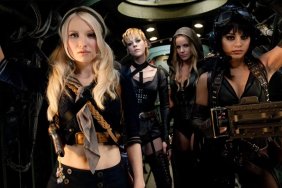Although 3D is increasingly commonplace in mainstream film and often used to mixed effect, director Zack Snyder’s vision for his latest, Legend of the Guardians: The Owls of Ga’Hoole began long before the recent trend, going back more than three years to shortly after he completed work on 300 and happened to come across still images of owls rendered by that film’s Art Director, Grant Freckleton, and his company, Animal Logic.
“I happened to see those paintings,” Snyder recalled at a Q and A following a 3D IMAX press screening, “I just stumbled upon them and said, ‘What is this ridiculously awesome thing?’ I was told, ‘Oh, you wouldn’t be interested in that. It’s an owl movie for kids.’… I said, ‘This is cool, but if we were to make this into a movie, we’d have to do this for every shot.'”
The ambition involved in capturing the photo-real look in animation became one of the film’s biggest challenges, but one that Snyder was able to balance through the use of 3D, striking a harmony between photo-real characters and larger-than-life environments.
“The only reason to make the owls naturalistic is to make the world crazy,” Snyder explained, “If the owls are cartoons and the world is a cartoon, the jeopardy is thrown out the window… The 3D is really meant to make the world real, instead of just to poke you in the eyes.”

Because the complicated computer models exist from the beginning in a 3D environment, certain stereoscopic effects are possible that could never exist in a post-conversion film or, in the case of one of the films elaborate flight sequences, even in a live-action film shot in 3D. As the characters glide through a ferocious storm, every drop of rain exists as a fully rendered three dimensional object, appearing on it’s own visual plane.
Though rain is a good example of an 3D effect uniquely suited to computer animation, Snyder decided to actual downgrade the efficiency of certain shots to give the look of Guardians a more handcrafted feeling. The director ordered a lag in certain panning shots, aiming to catch the imperfections that would occur as if live owls were really being filmed with miniature 3D cameras.
Snyder’s live-action know-how then combined with Animal Logic’s technical genius. The FX house had actually been developing the hyper-detailed owl models for two years before Snyder signed on. One of the hurdles involved was the realistic look of the creatures’ feathers and a fluid movement that, in the past, has been cheated in the editing.

“Some of the most impossible bits of it are also the most subtle bits of it,” said Snyder, “Just putting their wings back — all the feathers need to fold up on top of each other. It’s the same model. A lot of times, in the past, the bird that is the bird with his wings out is an entirely different model than the bird with his wings folded. Because putting the wings back is crazy. You don’t even try and do that. But our birds actually could put their wings back and fold their wings up. Just doing that is a million points of contact between the feathers. It’s crazy math that is just so off the charts. You could go to Mars on the same math that is those guys folding their wings up.”
Since he’s speaking as man who knows exactly how much work is involved in getting to Mars, Snyder knows what hes talking about.
Legend of the Guardians is now playing in 3D in theaters everywhere.









